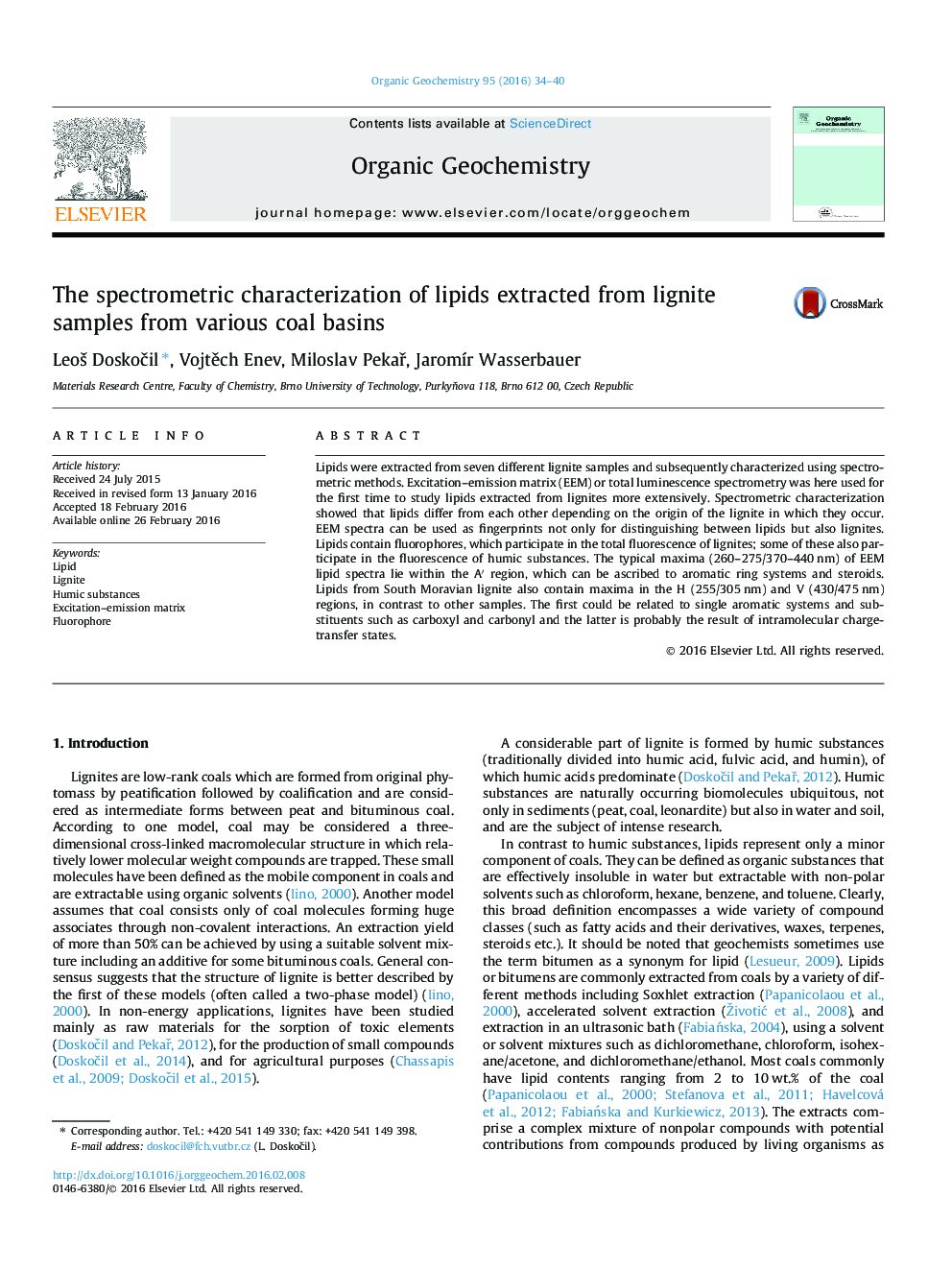| Article ID | Journal | Published Year | Pages | File Type |
|---|---|---|---|---|
| 5161579 | Organic Geochemistry | 2016 | 7 Pages |
Abstract
Lipids were extracted from seven different lignite samples and subsequently characterized using spectrometric methods. Excitation-emission matrix (EEM) or total luminescence spectrometry was here used for the first time to study lipids extracted from lignites more extensively. Spectrometric characterization showed that lipids differ from each other depending on the origin of the lignite in which they occur. EEM spectra can be used as fingerprints not only for distinguishing between lipids but also lignites. Lipids contain fluorophores, which participate in the total fluorescence of lignites; some of these also participate in the fluorescence of humic substances. The typical maxima (260-275/370-440Â nm) of EEM lipid spectra lie within the Aâ² region, which can be ascribed to aromatic ring systems and steroids. Lipids from South Moravian lignite also contain maxima in the H (255/305Â nm) and V (430/475Â nm) regions, in contrast to other samples. The first could be related to single aromatic systems and substituents such as carboxyl and carbonyl and the latter is probably the result of intramolecular charge-transfer states.
Related Topics
Physical Sciences and Engineering
Chemistry
Organic Chemistry
Authors
LeoÅ¡ DoskoÄil, VojtÄch Enev, Miloslav PekaÅ, JaromÃr Wasserbauer,
